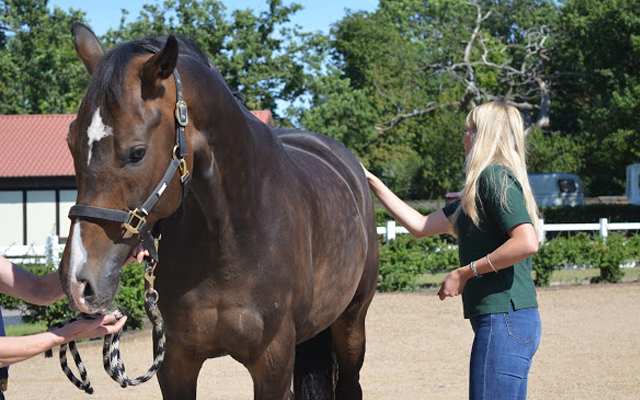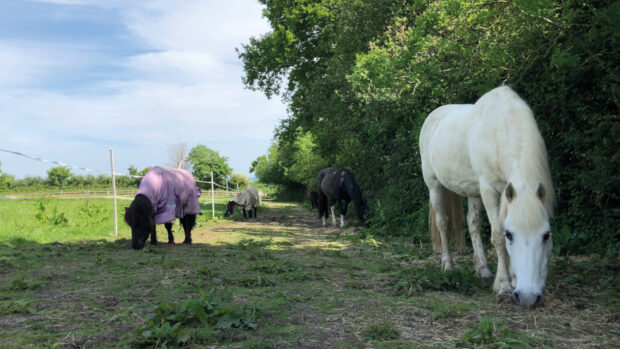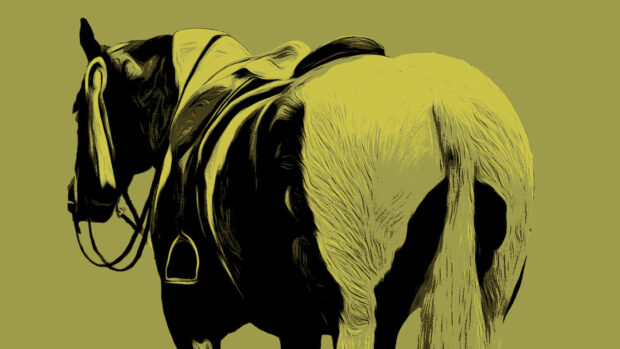Advertisement Feature
Identifying fat from muscle can be tricky but by getting to grips with body condition scoring you can easily monitor your horse’s condition every week
Body condition scoring (BCS) is a practical method of assessing fat covering, independently of muscle development, using a numerical grading system. Several areas where horses commonly lay down fat are assessed by eye and — crucially — by touch, using either a zero to five or a one to nine scale. The latter, shown below, is adapted from the method published by Henneke et al (1993) and assesses fat coverage in six key areas; the neck, shoulder, withers, loins, ribs and tailhead.
The importance of BCS
Frequent body condition scoring should be part of routine management for every horse and helps assess whether any changes in diet may be necessary. A BCS that is too high or low can pose significant health risks and may act as a warning that veterinary and/or nutritional advice is needed. In fact, your horse’s BCS is equally, if not more important, than knowing his weight.
What is the ideal BCS?
On a one to nine scale, a score of five (moderate) is generally considered ideal, although most of us will know that maintaining the perfect figure isn’t always easy! Equally horses, like people, come in all shapes and sizes and it’s important to remember that what is considered ideal or healthy condition will vary between individuals. For example, a BCS of four to 4.5 may be acceptable for a racehorse in training, while a 5.5 at the end of summer may be fine for a leisure horse. In fact, seasonal fluctuation in BCS is normal, particularly for native breeds. Provided your horse is otherwise fit and healthy and not laminitic, a BCS of 4.5 to 5.5 is considered acceptable, depending on the time of year. Do note though that BCS is just one aspect of good health; hoof and coat condition, soundness, clear nostrils and a bright eye are also all indicators.
Muscle versus fat
It’s important to note that BCS is an assessment of fat not muscle, but differentiating between the two can sometimes be difficult — even for experienced owners. In general, fat feels spongey while muscle feels firm. But a loss of muscle tone or ‘softer’ muscle in unfit or older horses may sometimes be confused with fat. Equally, low muscle mass in older horses may lead to an underestimation of fat mass/covering.
Topline
The horse’s topline consists of both muscle and fat. Fat can’t be converted to muscle, so resist the temptation to increase feed if it is muscle development, rather than fat coverage, that is lacking.
Muscle building requires both a balanced diet (particularly suitable levels of amino acids) and correct exercise, meaning that a loss of topline in older or unexercised horses is, to a certain extent, inevitable.
Top Tips
- Make sure your horse/pony is relaxed and standing as squarely as possible on a firm, level surface
- Accuracy of body condition scoring relies on touch, so don’t wear gloves
- Score each of the six individual areas where horses commonly lay down fat (on a one-nine scale) before taking an average to calculate your final score
- Remaining objective and consistent can be tricky even for experienced owners — always use the guide to help ensure your score is as accurate as possible
- Ensuring the same person assesses your horse or pony’s BCS helps to prevent individual error, although getting a second opinion from time to time may be helpful
Visit spillersfeeds.com for more weight management tools




